Hot Chips 2020 Live Blog: Google TPUv2 and TPUv3 (2:30pm PT)
by Dr. Ian Cutress on August 18, 2020 5:30 PM EST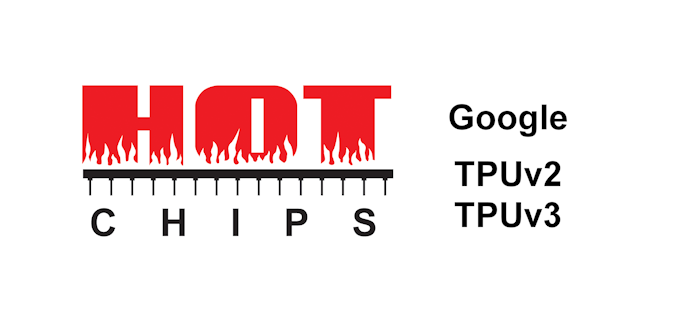
05:36PM EDT - No TPUv4 info in this talk, just fyi. Google often talks about these chips well after deployment
05:36PM EDT - Here's the history
05:36PM EDT - TPUv1 in 2015 for inference
05:36PM EDT - TPUv2 for Training in 2017
05:37PM EDT - ML training has unique challenges
05:37PM EDT - type of compute, amount of compute
05:37PM EDT - Training is exaflop or zettaflop, while inference is 1 GOP
05:37PM EDT - Training is sensitive
05:37PM EDT - Training is experimentation - moving targets
05:38PM EDT - Scale up vs Scale out
05:38PM EDT - Inference can be scaled out
05:38PM EDT - Training is harder to scale out
05:38PM EDT - Bottlenecked by off-chip datapaths
05:38PM EDT - Constraint for time vs staffing
05:38PM EDT - Be ambitious on a budget
05:39PM EDT - Key goals first, all goals need to be 'ok' or 'good enough'
05:39PM EDT - Here's TPU1
05:39PM EDT - The central cycle is where the compute happens
05:39PM EDT - TPUv2 makes changes
05:40PM EDT - Make it more vector focused
05:40PM EDT - Memory uplift
05:40PM EDT - interconnect fabric
05:41PM EDT - Here's how it fits in TPUv2
05:41PM EDT - Multiple cores
05:41PM EDT - prefer fewer cores - big data problem and single instruction stream makes it easier to program
05:41PM EDT - VLIW
05:42PM EDT - 322bit VLIW bundle
05:42PM EDT - No i-cache, Instruction bundle memory with DMA
05:42PM EDT - keeping it good enough and old school
05:43PM EDT - dual issue ALU
05:43PM EDT - 128 instances of these lanes
05:43PM EDT - 8 sets of 128-wide vectors per cycle
05:43PM EDT - connectivity into matrix units
05:44PM EDT - 128x128 systolic array
05:44PM EDT - BF16 multiply
05:44PM EDT - Not the biggest aspect of chip area though
05:44PM EDT - hardware savings are money savings
05:45PM EDT - Why 128x128?
05:45PM EDT - sweetspot for utilization without devoting more area to wiring
05:46PM EDT - SRAM scratchpad memories, software visible
05:46PM EDT - In-package HBM
05:46PM EDT - Async DMAs
05:46PM EDT - HBM stores vectors and matrices - strides over vectors
05:46PM EDT - 700 GB/s per chip due to HBM
05:47PM EDT - Interconnect router
05:47PM EDT - Easier to build the memory system this way
05:47PM EDT - TPU has to be flexible enough
05:47PM EDT - 2D torus
05:48PM EDT - DMA into other memory
05:48PM EDT - Now TPUv3
05:49PM EDT - 2x mat mul units
05:49PM EDT - Clock 700 to 940 MHz
05:49PM EDT - HBM +30%
05:49PM EDT - 2x HBM
05:49PM EDT - 650 GB/s interconnect
05:49PM EDT - Supports 4x nodes per interconnect
05:49PM EDT - 1024 chip v3 systems
05:50PM EDT - XLA compiler optimizations
05:52PM EDT - Storage over datacenter network
05:53PM EDT - >100 PF in TPUv3 pod
05:54PM EDT - Near ideal scaling on certain workloads
05:54PM EDT - TPUv3 perf uplift
05:56PM EDT - Can also do inference
05:58PM EDT - Q&A time
05:58PM EDT - Q: TPUv4 on GCP? A: Don't have a roadmap. Internal only for now.
05:59PM EDT - Q: How do you deal with 100GBs of embedding tables? A: Partitioned across the chips. We use the fast ICI network to communicate between the chips
05:59PM EDT - Q: Are there chip level features that are there to help MLP? A: Those models are complex to model for. We have various techniques we use.
06:00PM EDT - Q: Trade-off of 2D torus vs switch based? A: Both are valid. One of the biggest advantages with us is taht we didn't have to build a switch or manage those things. Scaling up to large systems and our network traffic patterns work with torus?
06:01PM EDT - *torus.
06:01PM EDT - Q: Protocol over interconnect? A: Custom but super fast
06:02PM EDT - Q: Given benefits in every TPU gen, do you tradeoff market and features? A: Our biggest constraint! Have to do a good job. We prioritize. It's important not to go too far, but you have to go sufficiently far. We have teams working on this. Field is also changing rapidly, so we TTM quick.
06:02PM EDT - End of talk, next is Cerebras Wafer Scale!


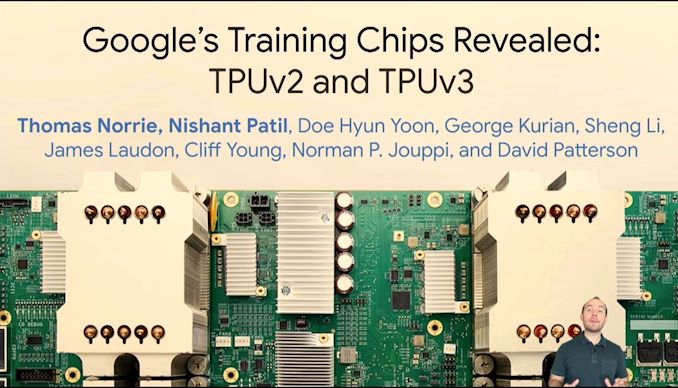
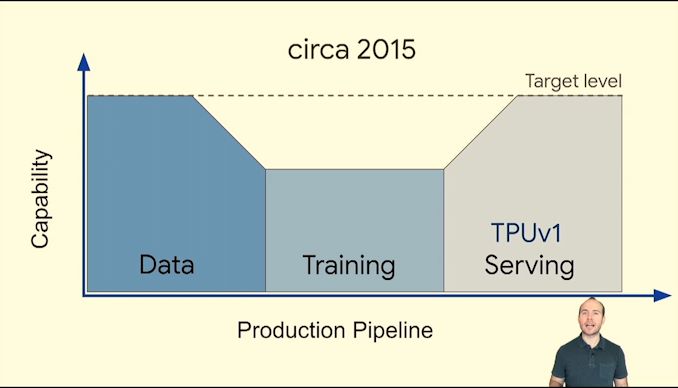
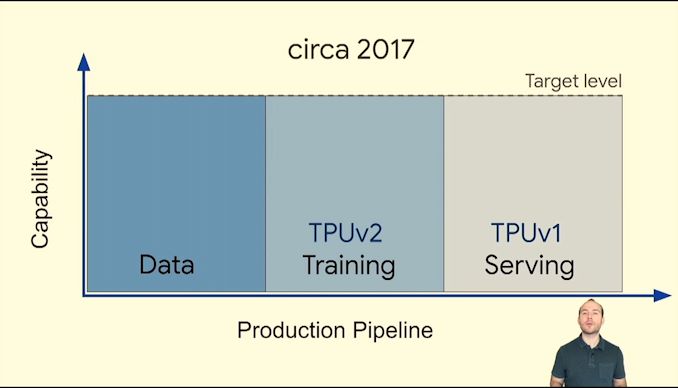
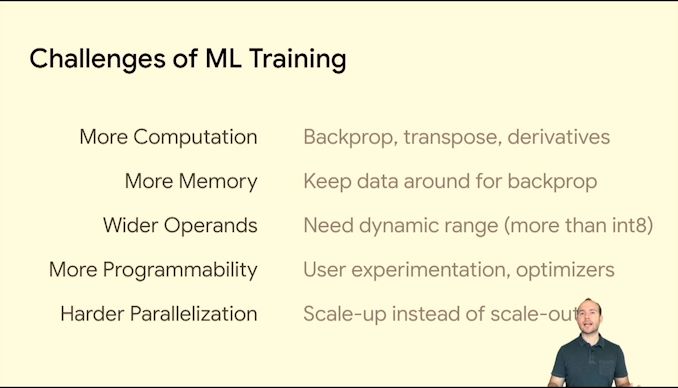
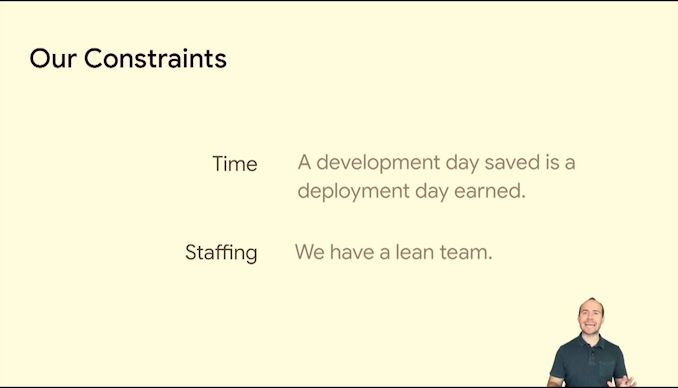
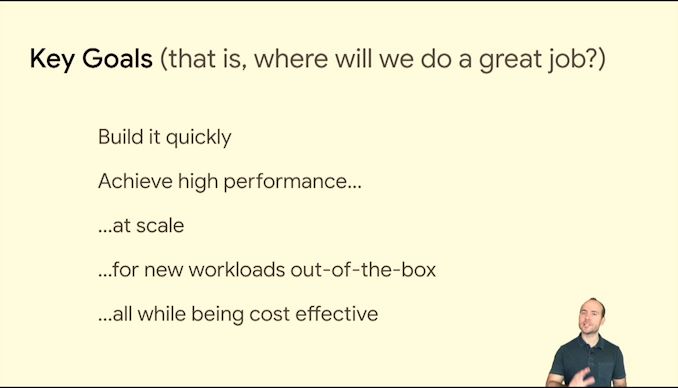
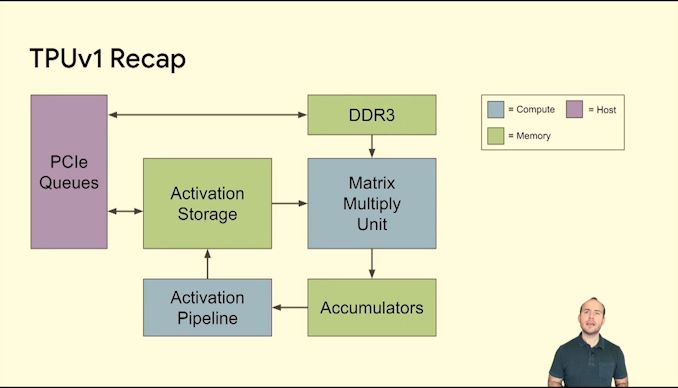
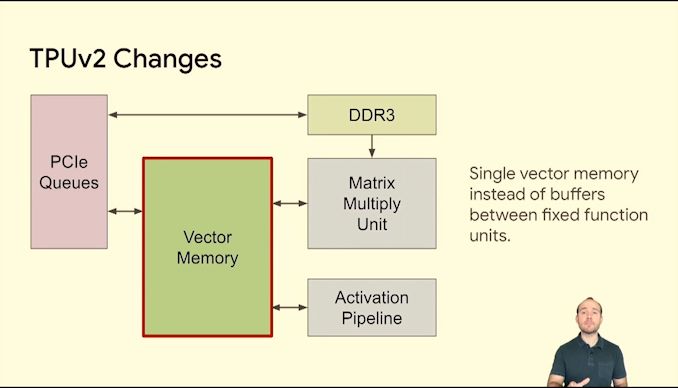
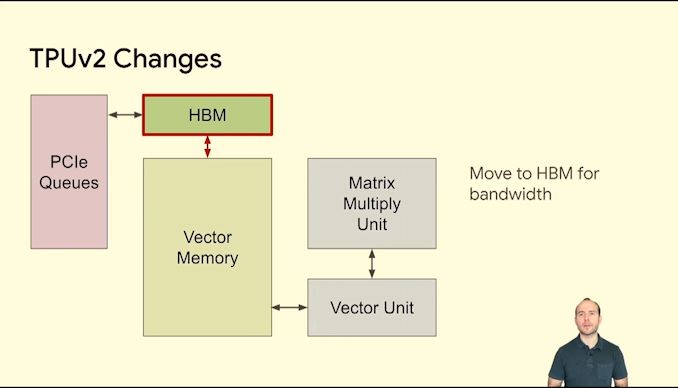

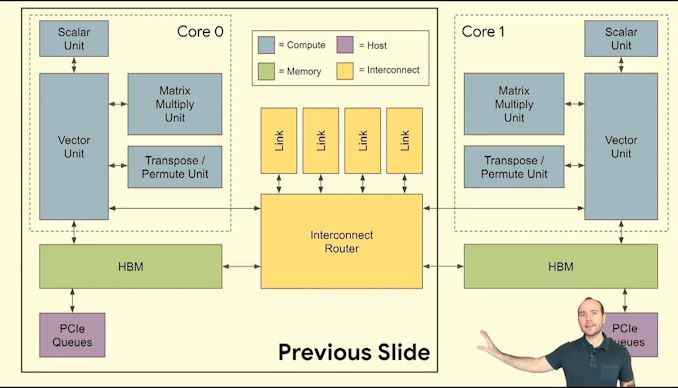
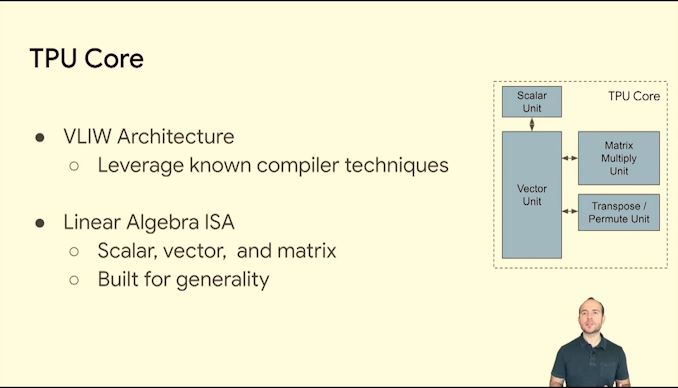
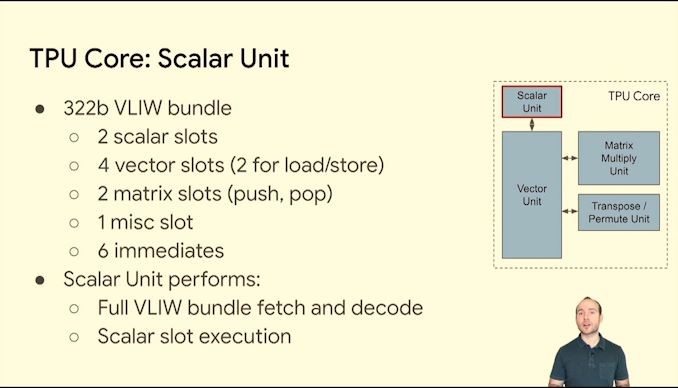
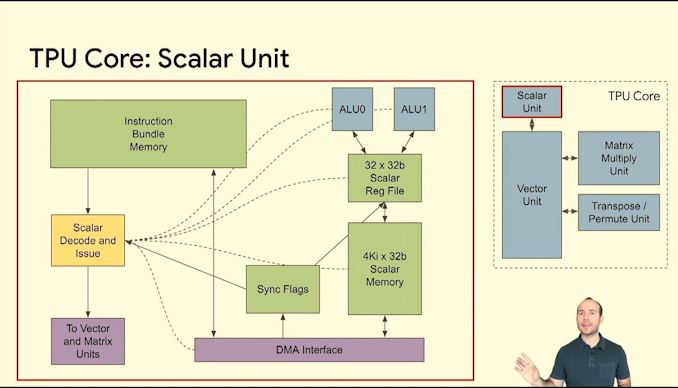
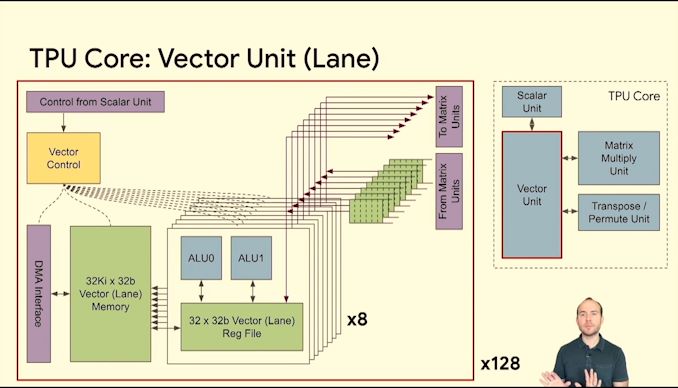
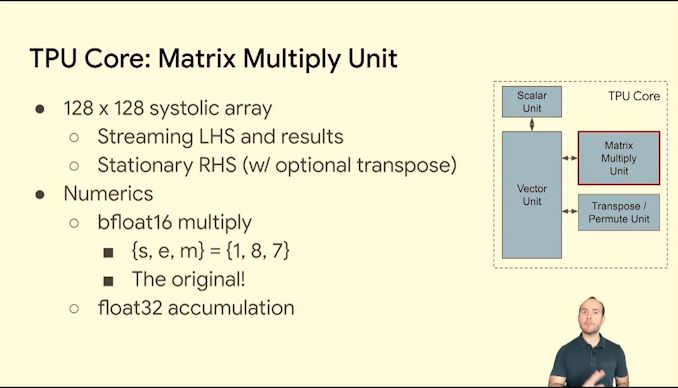
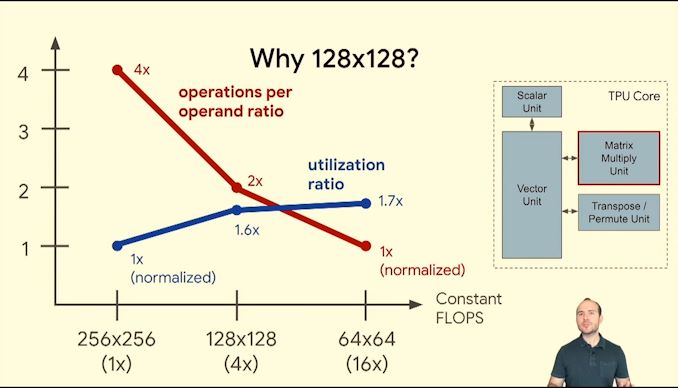
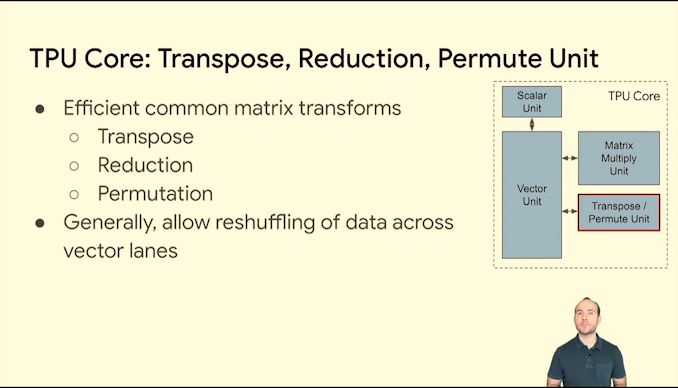
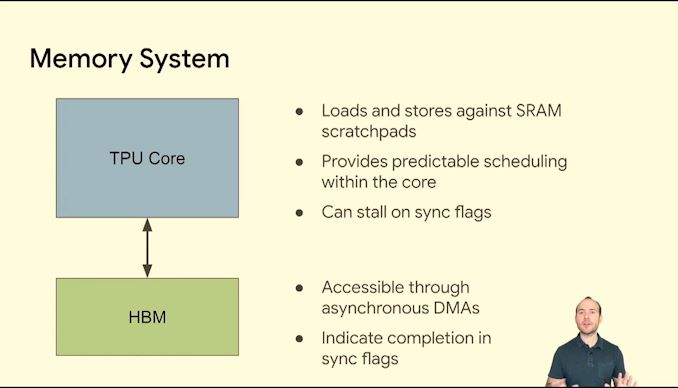
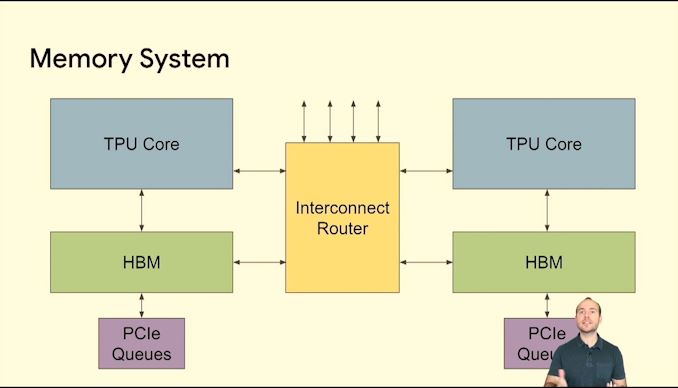

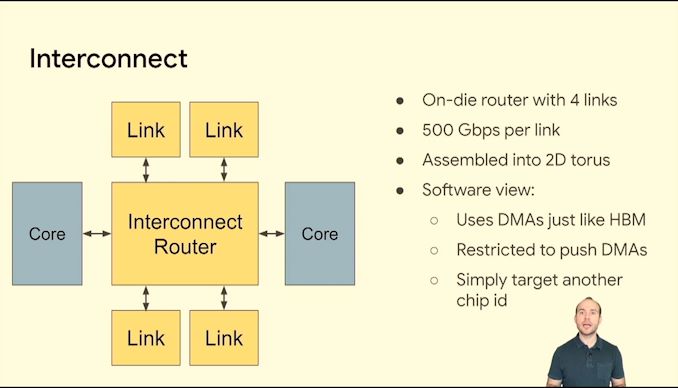
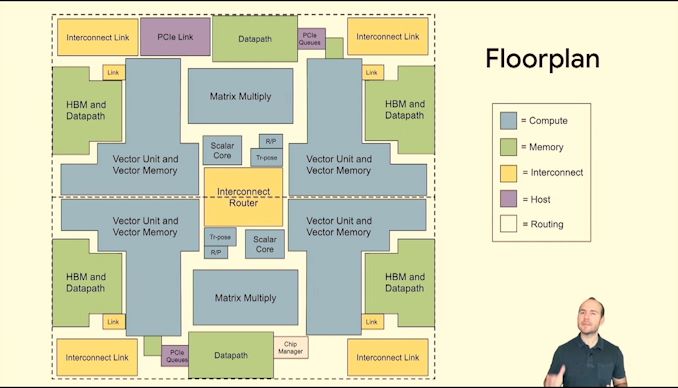
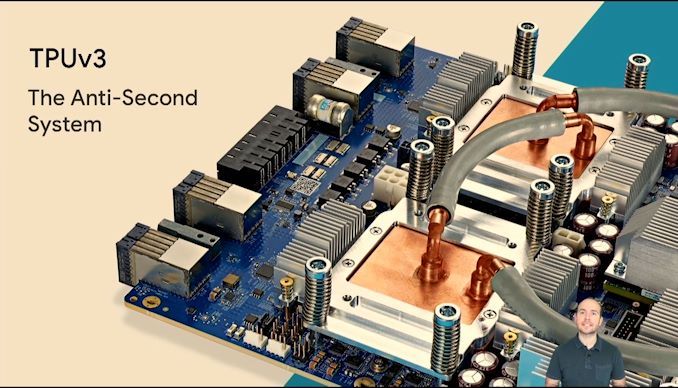
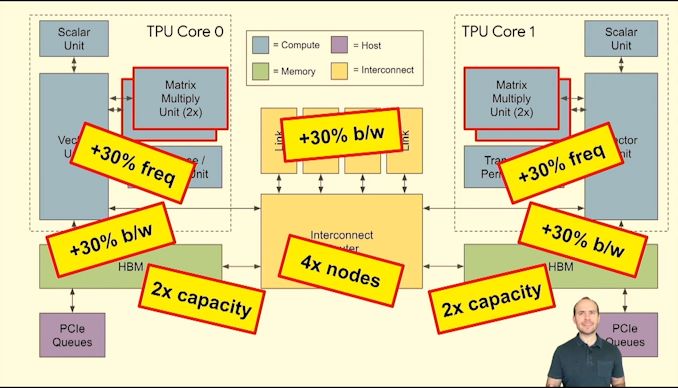
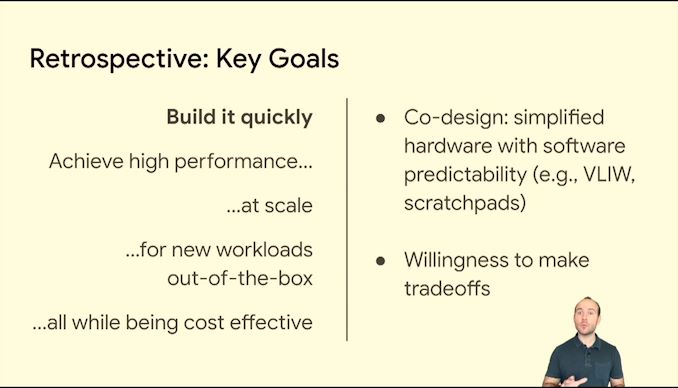

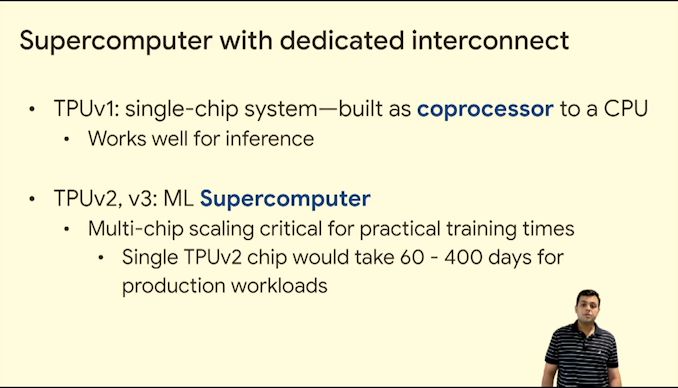
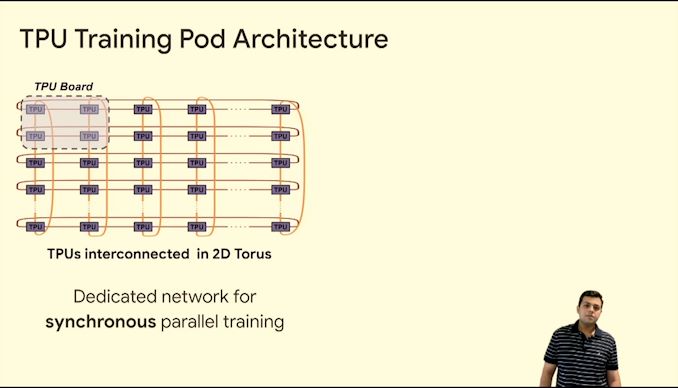
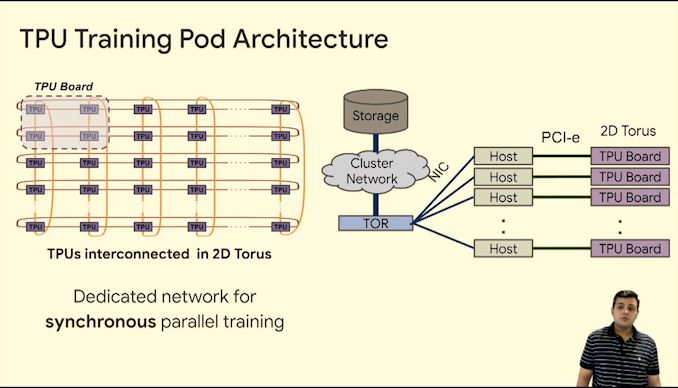
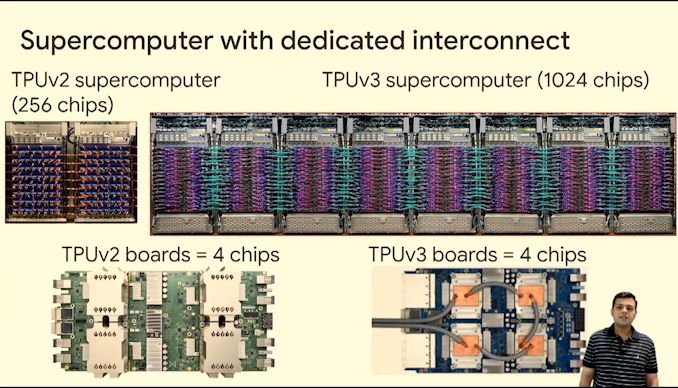
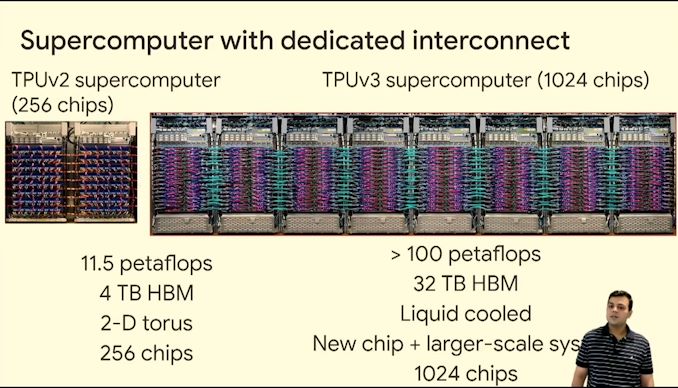
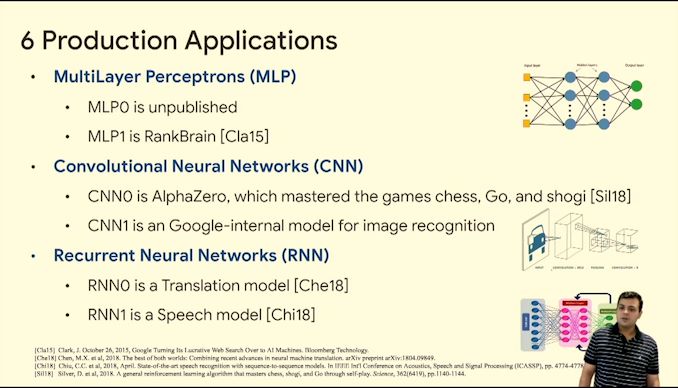
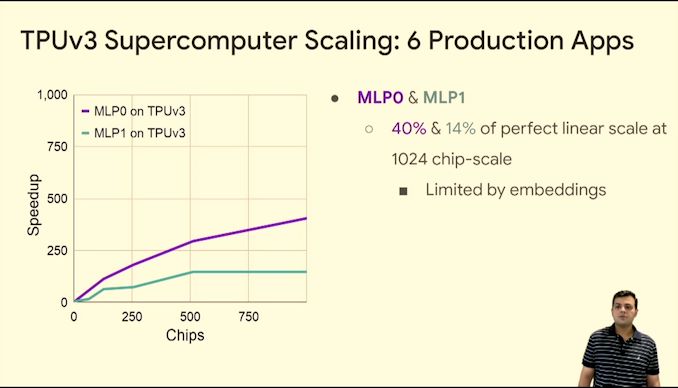
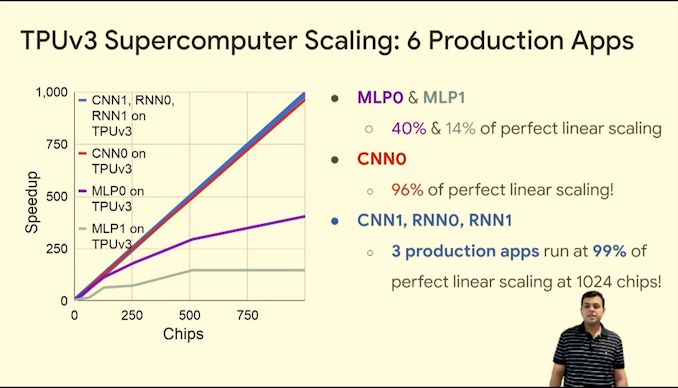
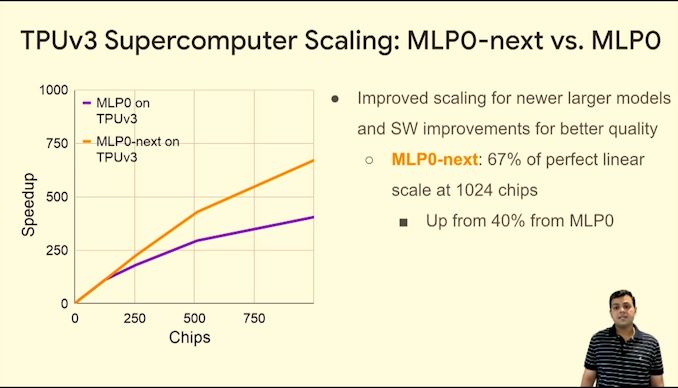
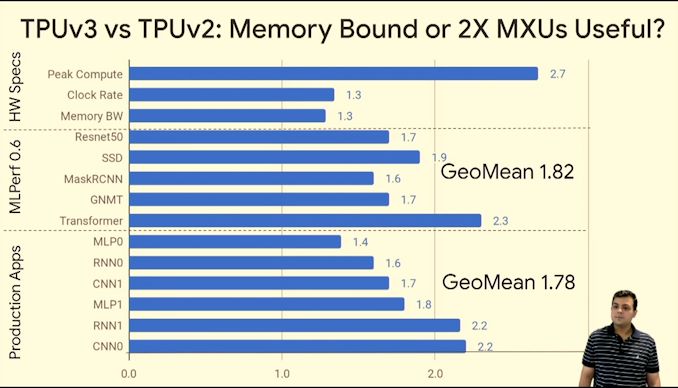

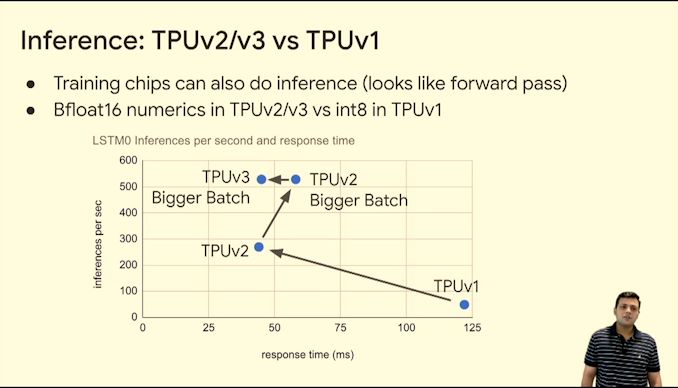
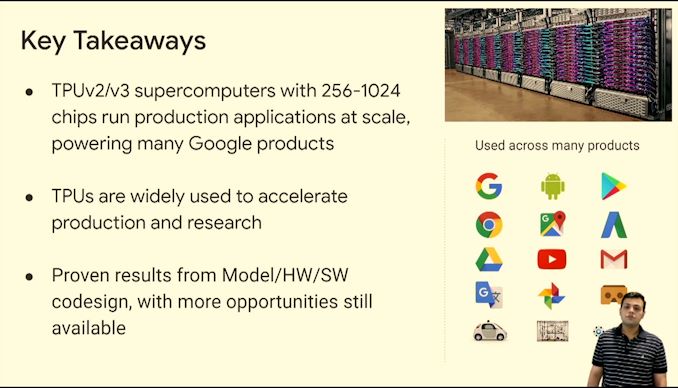








0 Comments
View All Comments